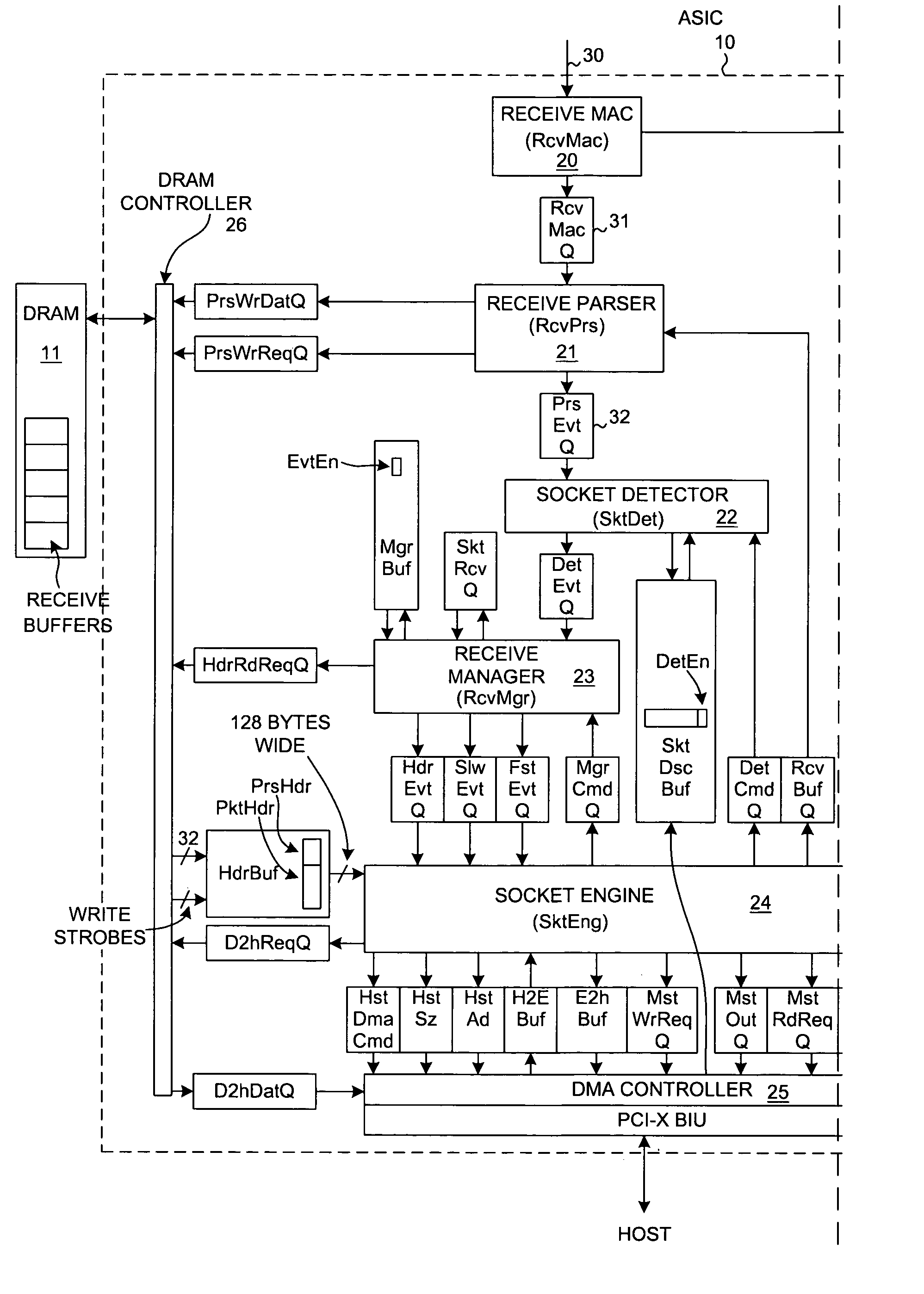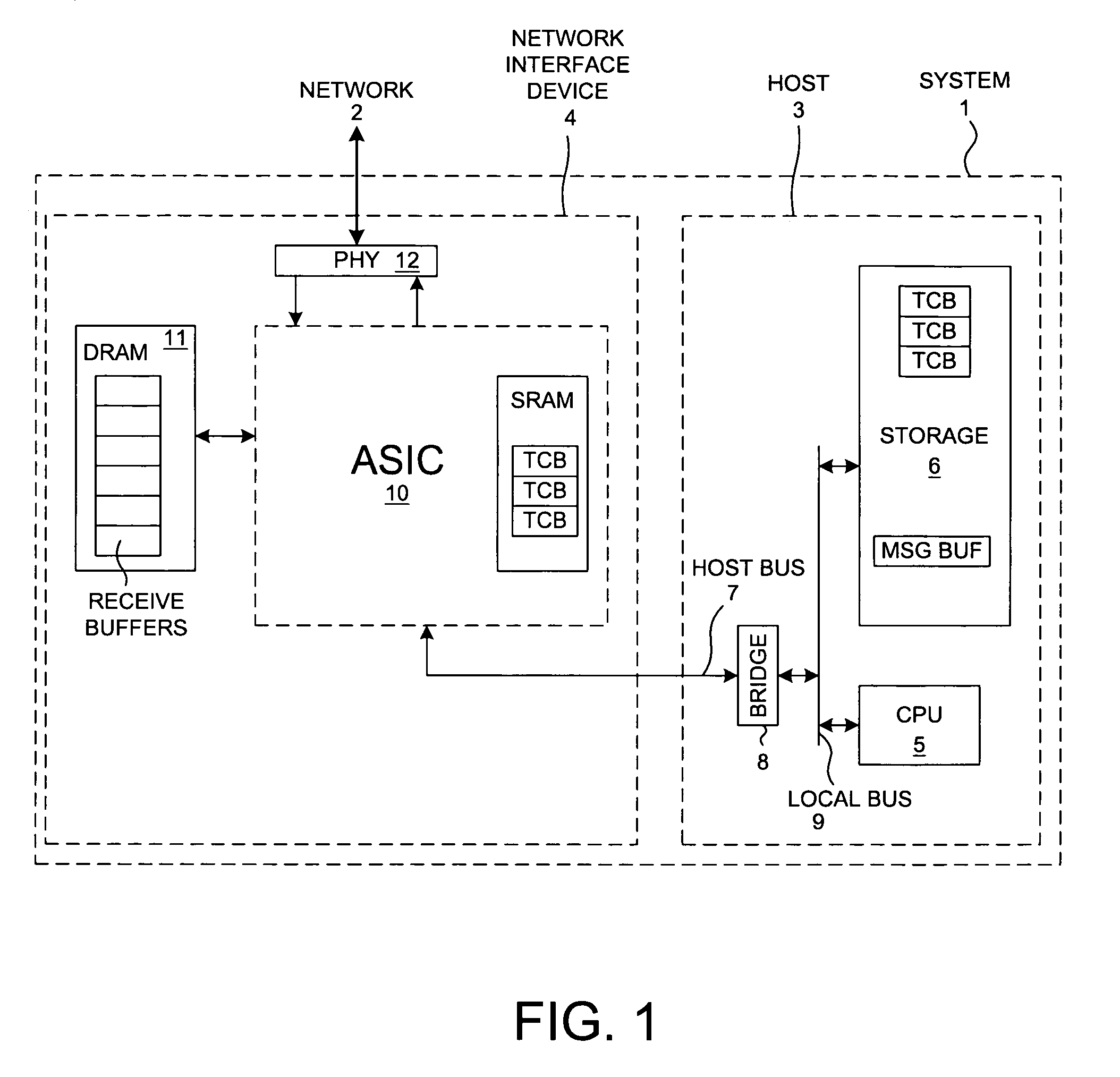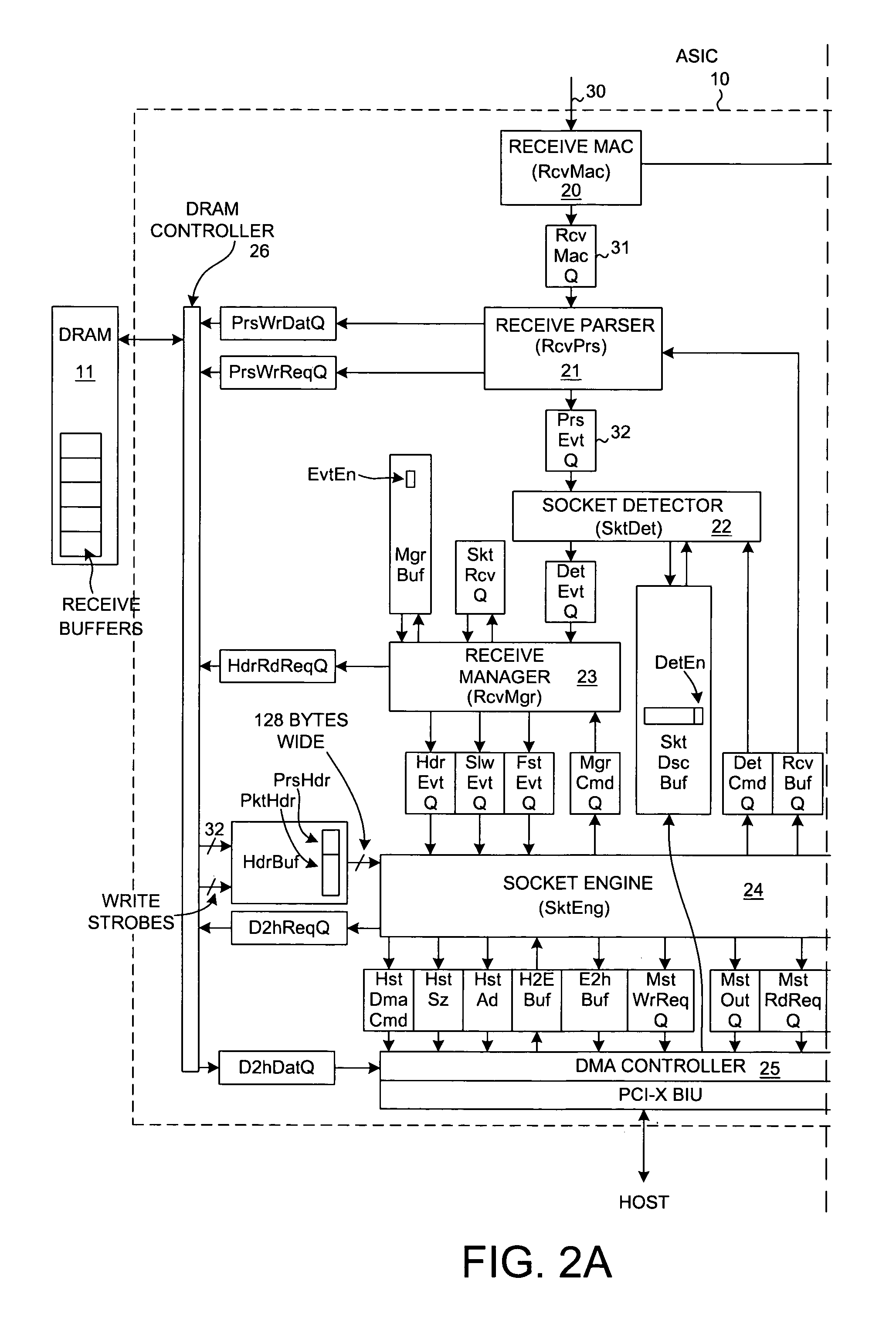TCP/IP offload device with reduced sequential processing
a technology of sequential processing and offload device, which is applied in the field of tcp/ip offload device with reduced sequential processing, can solve the problems of reducing the amount of processing power available to do the other, and the practical limit on the clock rate of the processor, so as to reduce the maximum clock speed, reduce the clock speed, and increase the number of packets per unit time
- Summary
- Abstract
- Description
- Claims
- Application Information
AI Technical Summary
Benefits of technology
Problems solved by technology
Method used
Image
Examples
Embodiment Construction
[0033]FIG. 1 is a simplified diagram of an exemplary system 1 used to illustrate the present invention. System 1 is coupled to a packet-switched network 2. Network 2 can, for example, be a local area network (LAN) and / or a collection of networks. Network 2 can, for example, be the Internet. Network 2 can, for example, be an IP-based SAN that runs iSCSI. Network 2 may, for example, be coupled to system 1 via media that communicates electrical signals, via fiber optic cables, and / or via a wireless communication channel.
[0034]System 1 includes a host 3 and a network interface device (NID) 4. Host 3 may, for example, be embodied on a motherboard. NID 4 may, for example, be an expansion card that couples to the motherboard. Host 3 includes a central processing unit (CPU) 5 or CPU chip-set, and an amount of storage 6. In the illustrated example, storage 6 includes a combination of semiconductor memory and magnetic disc storage. CPU 5 executes software stored in storage 6. The software inc...
PUM
 Login to View More
Login to View More Abstract
Description
Claims
Application Information
 Login to View More
Login to View More - R&D
- Intellectual Property
- Life Sciences
- Materials
- Tech Scout
- Unparalleled Data Quality
- Higher Quality Content
- 60% Fewer Hallucinations
Browse by: Latest US Patents, China's latest patents, Technical Efficacy Thesaurus, Application Domain, Technology Topic, Popular Technical Reports.
© 2025 PatSnap. All rights reserved.Legal|Privacy policy|Modern Slavery Act Transparency Statement|Sitemap|About US| Contact US: help@patsnap.com



